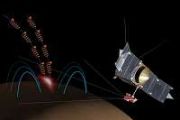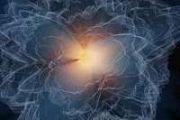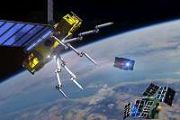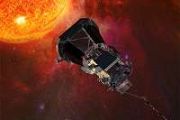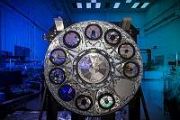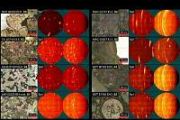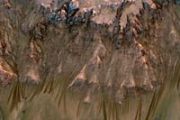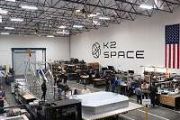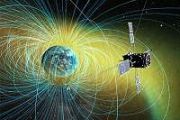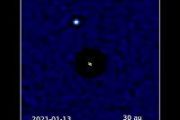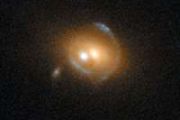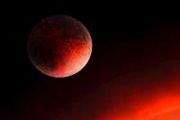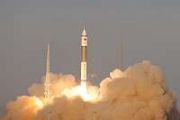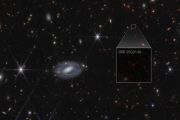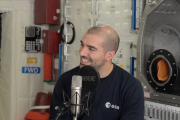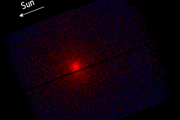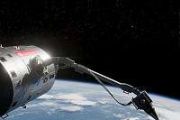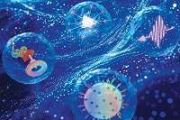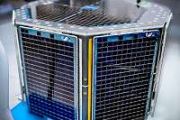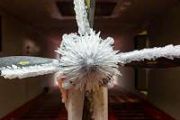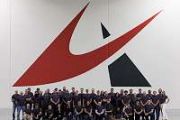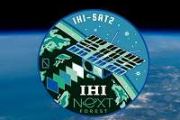
Copernical Team
Satellite constellations multiply on profit hopes, geopolitics
 The massive constellation of satellites operated by SpaceX, while still growing, will soon be joined in low Earth orbit by many more commercial competitors, but also government-sponsored programs.
When firms floated the idea of expanding access to high-speed internet through satellite constellations in low Earth orbit (LEO), analysts expected only two or three companies would succeed.
"B
The massive constellation of satellites operated by SpaceX, while still growing, will soon be joined in low Earth orbit by many more commercial competitors, but also government-sponsored programs.
When firms floated the idea of expanding access to high-speed internet through satellite constellations in low Earth orbit (LEO), analysts expected only two or three companies would succeed.
"B SpaceX launches Cargo Dragon carrying supplies and experiments to ISS
 SpaceX launched its 27th Commercial Resupply Service (CRS-27) mission for a 35-hour journey to the International Space Station (ISS) for NASA on Tuesday, March 14 at 8:30 p.m. EDT (0030 GMT Wednesday) from Launch Complex-39A (LC-39A) at the Kennedy Space Center, Florida.
The uncrewed Dragon capsule atop a Falcon 9 rocket is packed with more than 6,000 pounds of fresh food, hardware, and ex
SpaceX launched its 27th Commercial Resupply Service (CRS-27) mission for a 35-hour journey to the International Space Station (ISS) for NASA on Tuesday, March 14 at 8:30 p.m. EDT (0030 GMT Wednesday) from Launch Complex-39A (LC-39A) at the Kennedy Space Center, Florida.
The uncrewed Dragon capsule atop a Falcon 9 rocket is packed with more than 6,000 pounds of fresh food, hardware, and ex Webb captures rarely seen prelude to a supernova
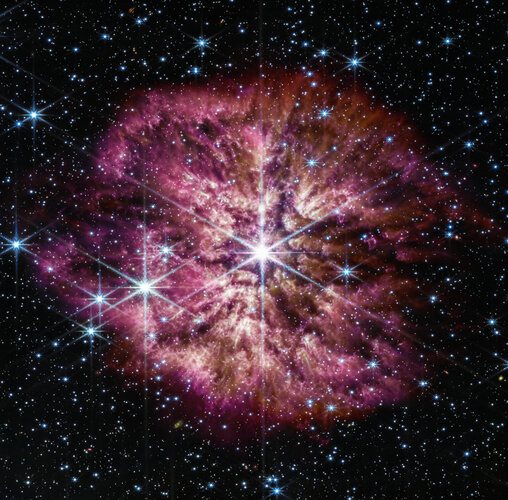
A Wolf-Rayet star is a rare prelude to the famous final act of a massive star: the supernova. As one of its first observations in 2022, the NASA/ESA/CSA James Webb Space Telescope captured the Wolf-Rayet star WR 124 in unprecedented detail.
Mix-and-match kit could enable astronauts to build a menagerie of lunar exploration bots
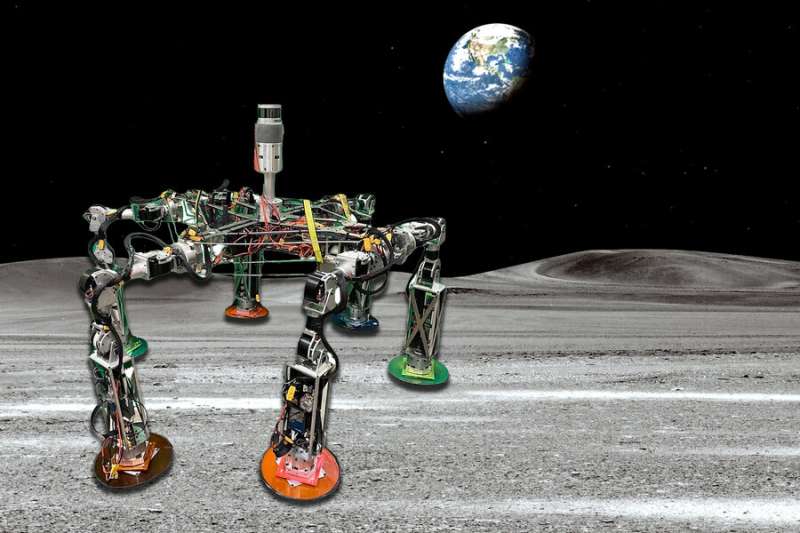
When astronauts begin to build a permanent base on the moon, as NASA plans to do in the coming years, they'll need help. Robots could potentially do the heavy lifting by laying cables, deploying solar panels, erecting communications towers, and building habitats. But if each robot is designed for a specific action or task, a moon base could become overrun by a zoo of machines, each with its own unique parts and protocols.
Carbon dioxide monitoring mission in development
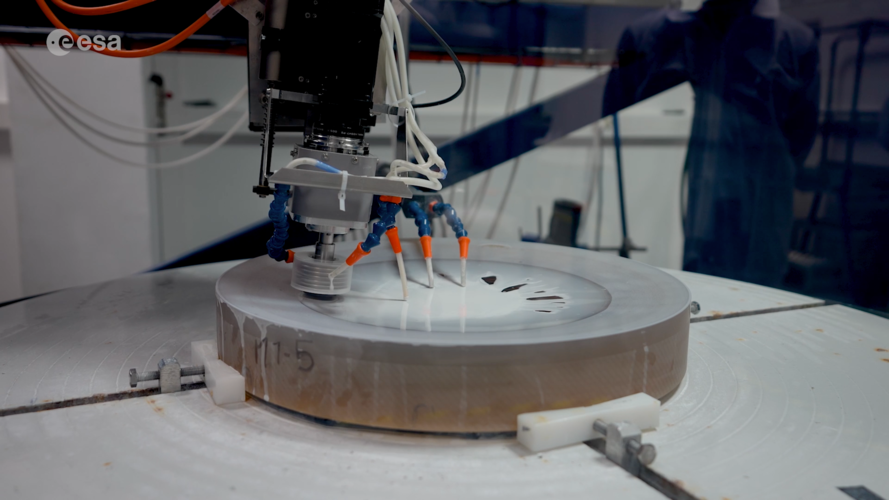 Video:
00:04:58
Video:
00:04:58
The pressure is on to reduce the amount of greenhouse gases we pump into the atmosphere – but the race is also on to support the monitoring that shows if targets are being met. Being developed by ESA on behalf of the EU, the new Copernicus Anthropogenic Carbon Dioxide Monitoring mission, or CO2M for short, is destined to be Europe’s prime mission for monitoring and tracking carbon dioxide emissions from human activity. CO2M is currently planned as a two-satellite mission, each of which will carry a near-infrared and shortwave-infrared spectrometer to measure atmospheric carbon dioxide at high
ExoMars rover testing moves ahead and deep down

The first of a new generation of lunar 'astronauts' return to Cologne
 Following their historical journey around the Moon as part of NASA's Artemis I mission, the radiation-measuring mannequins, Helga and Zohar, are back in Cologne. On 9 March 2023, the two female astronaut phantoms were presented to the media by the German Aerospace Center at its Institute of Aerospace Medicine for the first time since their flight. Once evaluated, the data from the Matroshka Astr
Following their historical journey around the Moon as part of NASA's Artemis I mission, the radiation-measuring mannequins, Helga and Zohar, are back in Cologne. On 9 March 2023, the two female astronaut phantoms were presented to the media by the German Aerospace Center at its Institute of Aerospace Medicine for the first time since their flight. Once evaluated, the data from the Matroshka Astr EMURGO Africa and Kepple Africa establish JV to further Web3 partnership
 EMURGO Africa and Kepple Africa Ventures has announced the establishment of a business joint venture EMURGO Kepple Ventures to further accelerate its strategic partnership investing in African Web3 businesses. EMURGO Africa and Kepple signed an MoU in September 2022 to jointly spearhead Web3 investment opportunities including token investments in Africa. Despite recent challenges such as the cry
EMURGO Africa and Kepple Africa Ventures has announced the establishment of a business joint venture EMURGO Kepple Ventures to further accelerate its strategic partnership investing in African Web3 businesses. EMURGO Africa and Kepple signed an MoU in September 2022 to jointly spearhead Web3 investment opportunities including token investments in Africa. Despite recent challenges such as the cry Sure South Atlantic picks Intelsat to connect three British Island Territories
 Intelsat, operator of one of the world's largest integrated satellite and terrestrial networks, and Sure South Atlantic, an international telecommunications service provider, have signed an expanded agreement to enable Sure to improve the capability and reliability of communications for residents of the Falkland Islands, Saint Helena and Ascension Island in the South Atlantic Ocean.
As the
Intelsat, operator of one of the world's largest integrated satellite and terrestrial networks, and Sure South Atlantic, an international telecommunications service provider, have signed an expanded agreement to enable Sure to improve the capability and reliability of communications for residents of the Falkland Islands, Saint Helena and Ascension Island in the South Atlantic Ocean.
As the Space-bound heart tissue to aid aging and long-flight studies
 Johns Hopkins Medicine researchers are collaborating with NASA to send human heart "tissue-on-a-chip" specimens into space as early as March. The project is designed to monitor the tissue for changes in heart muscle cells' mitochondria (their power supply) and ability to contract in low-gravity conditions.
The tissue samples will be launched into space aboard SpaceX CRS-27, a resupply miss
Johns Hopkins Medicine researchers are collaborating with NASA to send human heart "tissue-on-a-chip" specimens into space as early as March. The project is designed to monitor the tissue for changes in heart muscle cells' mitochondria (their power supply) and ability to contract in low-gravity conditions.
The tissue samples will be launched into space aboard SpaceX CRS-27, a resupply miss 


